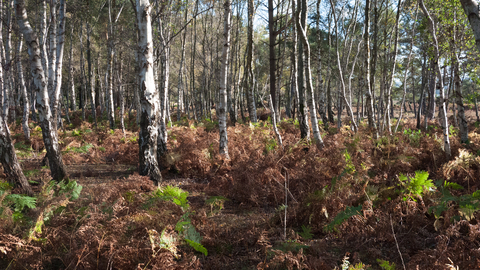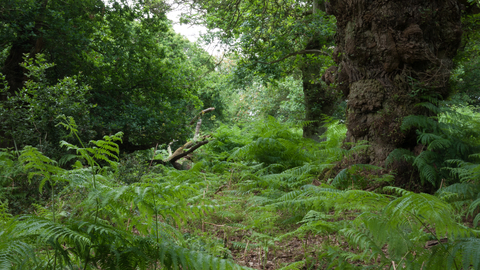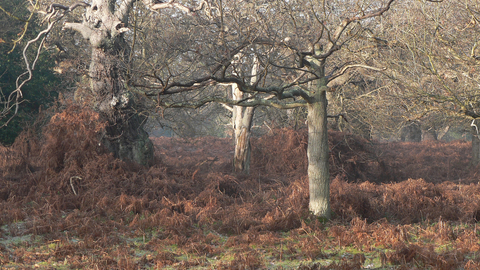


Lowland dry oak and birch wood
What is it?
This woodland type is typically found on well-drained acid sands and gravels and is floristically quite simple. Both downy and silver birch are characteristic, and sessile oak is sometimes found in wetter areas, although pendunculate oak is more common. Sweet chestnut may be present too, as many areas were planted up in the 18th century. Holly and rowan usually form a shrub layer, but may also grow taller to fill gaps in the canopy. Underfoot, bracken is dominant, sometimes interspersed with more heathy vegetation.
Why is it like this?
Lowland dry oak and birch wood developed on drier, nutrient poor soils where more demanding species are unable to flourish. Many areas were probably used as wood pasture in the past, but changes in land management shifted the balance towards more continuous tree cover. Today, dense stands of birch suggest recent succession from open heathland, but birches also colonise canopy gaps within woodland, and some secondary birch woods on heathland may have expanded from a core of ancient lowland dry oak and birch wood.
Distribution in the UK
Limited to the warmer south and east of England.
What to look for
Look for heather, broad-buckler fern, foxgloves, wood sage and common cow-wheat wherever the swathes of bracken thin out a little. Bilberry and mosses are more frequent toward the northern limit of the range of this woodland type. Veteran trees are frequently present, and may support a rich array of lichens together with specialist invertebrates and fungi. The Dark crimson underwing moth can sometimes be seen on sap runs. Lesser spotted woodpecker has vanished from much of our woodland but can still be found in open lowland dry oak and birch wood.
Conservation
This woodland type occurs on soils that can also support heathland and the boundaries between the two probably fluctuated in the past, depending on the level of human activity. Currently, the restoration of heathland is generally considered a priority in areas where both may be present, but where there is a core of ancient woodland present the extent of lowland dry oak and birch wood should be carefully considered.
As with other woodland types, lowland dry oak and birch wood suffers from overgrazing by deer, airborne pollution and invasion by non-native species including rhododendron and shallon.
